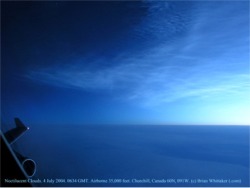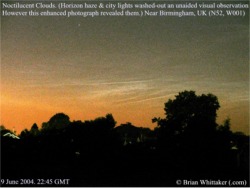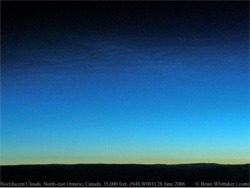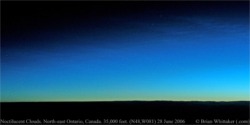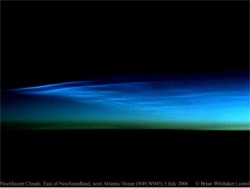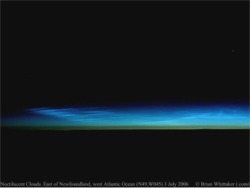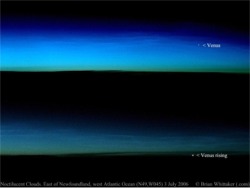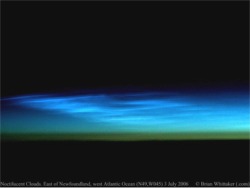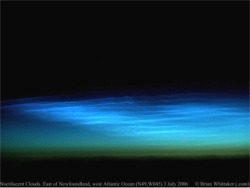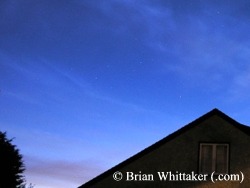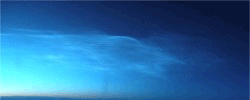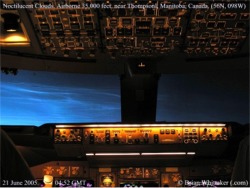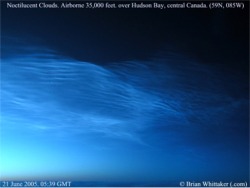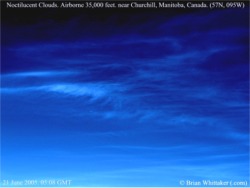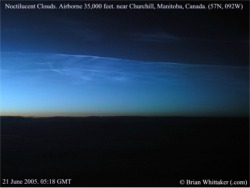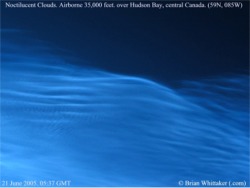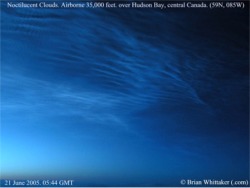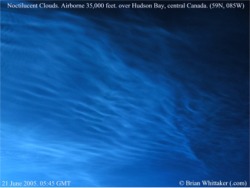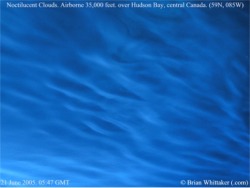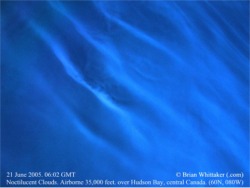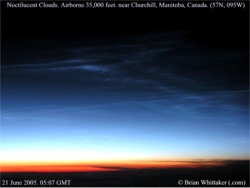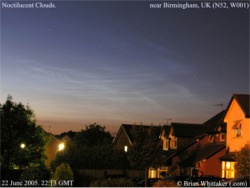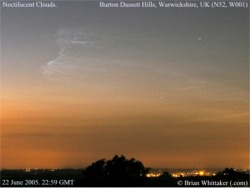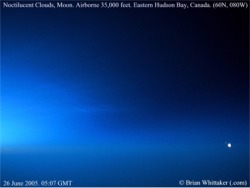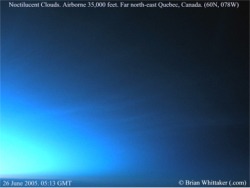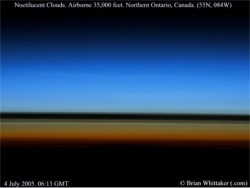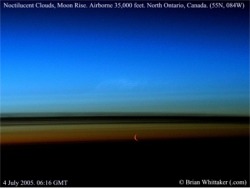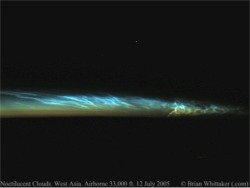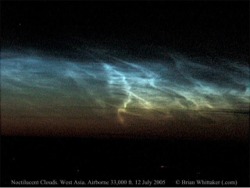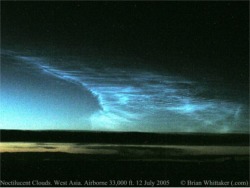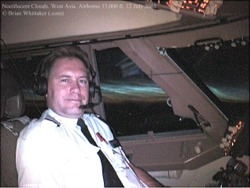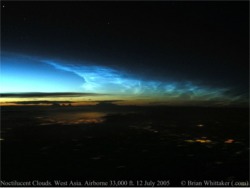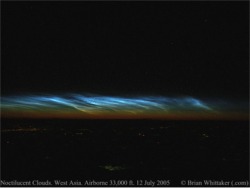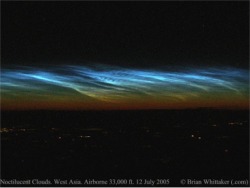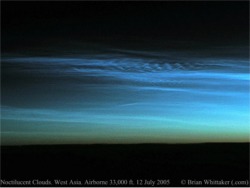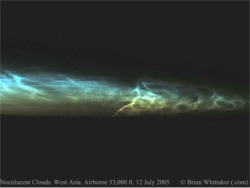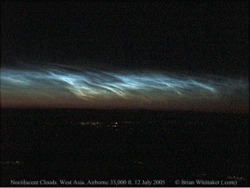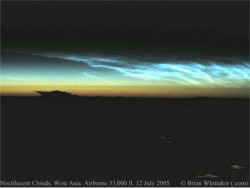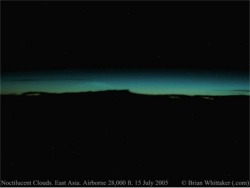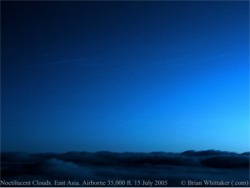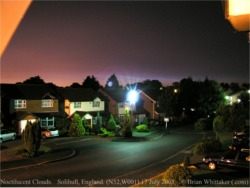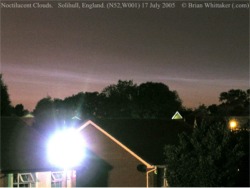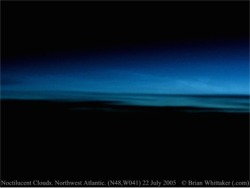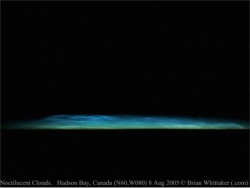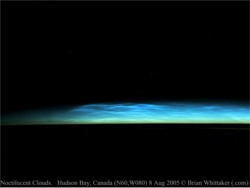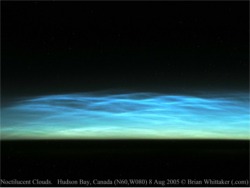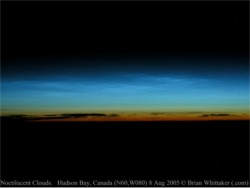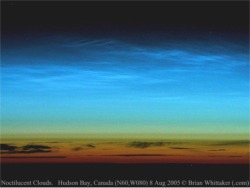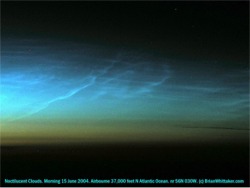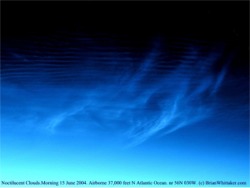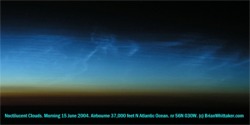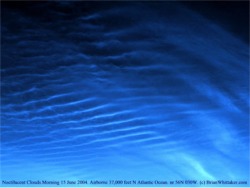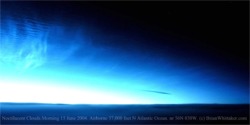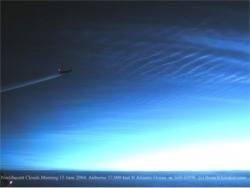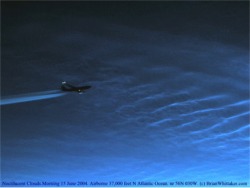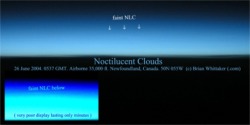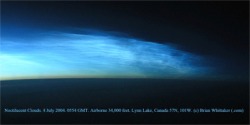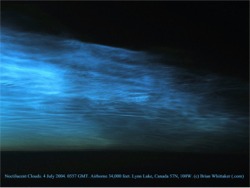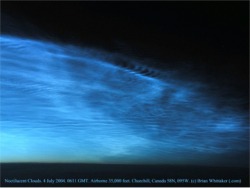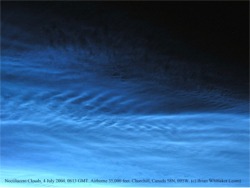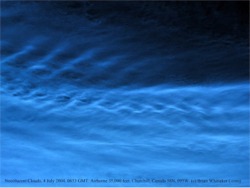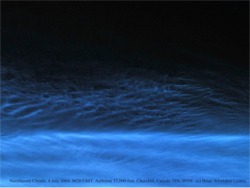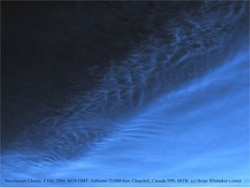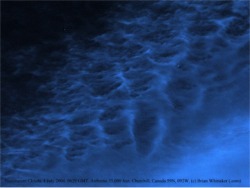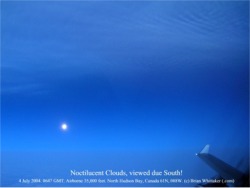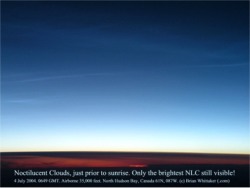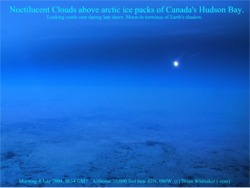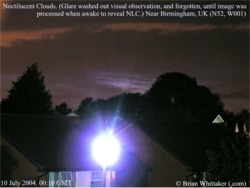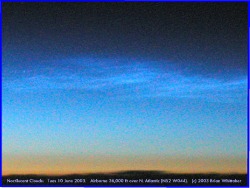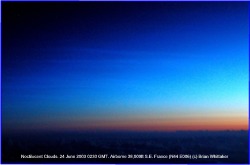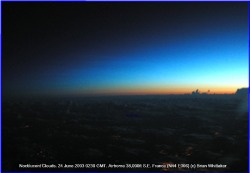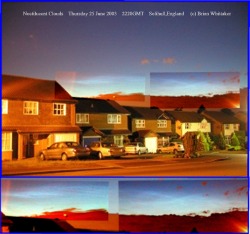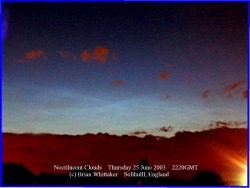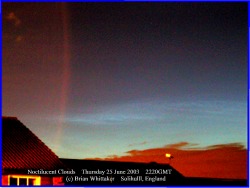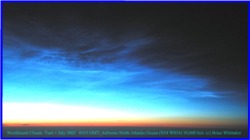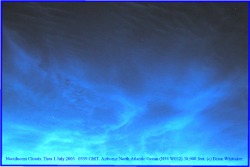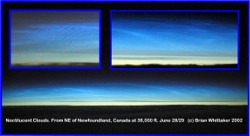Noctilucent Clouds
Your best source for Airborne Observation Photographs.
Personal Accounts by Brian Whittaker
(c)1998-2006. ![]()
Noctilucent Clouds are extremely high altitude seasonal clouds over the polar regions of Earth. They are very thin, like Cirrus Clouds, but are so faint that they are never visible in the day. At an altitude of approximately 50 miles, they can become visible long after the sun has set since they are still in bright direct sunlight and the sky locally has dimmed sufficiently enough. They are called "Noctilucent" because they shine a bluish-white while it is dark with stars visible above. From the northern hemisphere they are only visible between late May and early August of every year. Ideally, you should also be north of about 50'N latitude.
My interest in Noctilucent Clouds began by 1980, but it wasn't for almost 20 years before I finally saw one. The illusive Noctilucent Clouds are there. Now I see several every year and hope to document all observations on these pages. These pages will expand with time as I refine my observation data. To get a GREAT picture you need: 1) an uncommonly great display, 2) clear non-hazy skies down to the horizon, 3) an area with an unobstructed visible northern horizon, 4) a night capable camera with tripod, 5) and be awake. If observing Noctilucent Clouds can be illusive, then a you can appreciate that obtaining a great picture is even more so. I had to wait until July 1st, 2003 to get my first GOOD photos. Incidentally, Digital Cameras take great NLC images! Even small pocket Digitals on automatic (preferably manually focussed to infinity) will be impressive for a bright display.
![]()
|
Useful links |
|
|
|
|
| The Noctilucent Cloud Observers' Homepage <== Amateur Observing | |
| NASA "Strange Clouds" <== NASA info | |
|
The
Space Shuttle Columbia's last flight formed NLC over Antarctica <==
Recent News |
|
|
NASA Earth Observatory "Space Shuttle contributions?" <== Sputnik was 1957 |
|
|
Note: First observed 1885. Continuous observation records exist from 1962 |
|
| British Antarctic Survey Press Release -Temperatures aloft <== southern NLC | |
| SpaceWeather.com (Interesting daily update) <== NLC sub page | |
| (Official Site) <== New satellite AIM ==> (BBC story) | |
| BrianWhittaker.com NLC Airborne! (this site's home page) <== Airborne photo source | |
|
|
|
|
The above sites are kept up to date and have excellent content and links. |
|
|
Download free "Noctilucent Computer" on MS
Excel Spreadsheet. May be useful for certain calculations (play). 45 Kb.
DOWNLOAD. This site is still being refined and added to. 1998 / 1999 / 2000 / 2001 / 2002 / 2003 / 2004 / 2005 / 2006
|
